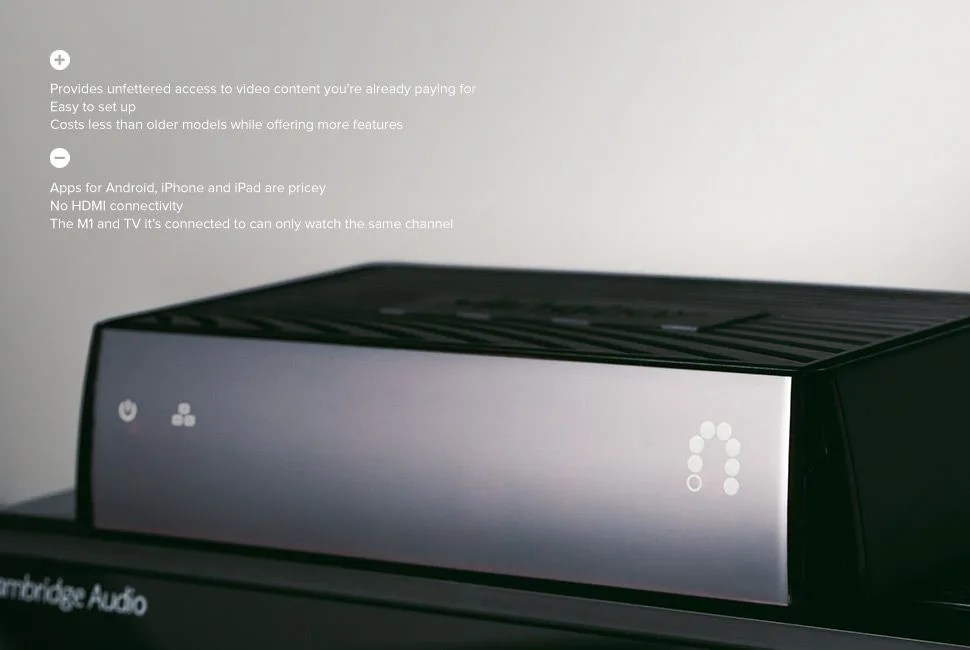The original Slingbox Classic was way ahead of the curve when it launched in 2005. Two years before the release of the original iPhone and the launch of Netflix’s Video on Demand streaming service, the innovative device already offered buyers the ability to watch video content from any source in their home via a remote PC located anywhere in the world, granted it had a decent broadband connection.
MORE STREAMING: The GP Collection of Movies and More | 5 Great Comedy Web Series | GP 100 Roku 3
Ten years later, it’s easy to think that the ground made up by “TV Anywhere” streaming services from television providers as well as on demand resources like Netflix, Hulu Plus and HBO GO have made owning a dedicated device from Slingbox irrelevant. But is that really the case? After spending a few days testing the newest member of the Slingbox family, the realistic answer is: it depends.
The Slingbox M1 ($150) replaces the Slingbox 350, adding built-in wi-fi on top of the same streaming capabilities while costing $20 less, making it the most affordable Slingbox yet. At $150 though, it’s still more expensive than set-top boxes from Roku, Apple or Amazon’s Fire TV, which all provide access to a growing library of TV-based content.
Setup for the Slingbox is straightforward and involves connecting the M1 to your video device of choice via an included set of component video and audio cables. Support for HDMI to reduce the number of cables choking an entertainment center would be welcomed — but in Sling’s defense, HDMI is an encrypted standard that normally prevents video content from being split or shared. (And if you want HDMI, the Slingbox 500 supports it for double the price of the M1.) An IR emitter that works with cable and satellite boxes is built right in to the box; a separate IR blaster to stick on top of a cable or satellite box is also provided for those planning on tucking the M1 out of sight. After installation, completing the setup requires downloading either a free desktop version of the Slingplayer app for PC or Mac, or paying $15 for a version of the app optimized for iPad, iPhone or Android. The software then asks users to create a Slingbox account, pick their TV provider, enter a zip-code and input their wireless network credentials to get online in the event an ethernet cord isn’t used.
Enjoying live TV once the configuration is done via the desktop app or their mobile counterparts is intuitive, and much like navigating a typical channel guide. Video quality depends on both the network connection of the M1 as well as the connection where you’re streaming. Still, we generally saw HD results in our tests.
The M1 easily trumps many TV Anywhere streaming solutions by allowing owners truly unfettered access to the video content they’re already paying for, including recorded content in the case of DVR owners. There’s no need to worry about blocked channels or regional blackouts in the case of sports. You also don’t have to be on the same internet connection as your TV’s set-top box. For road warriors in love with the home team or addicted to TV, the appeal is obvious.
